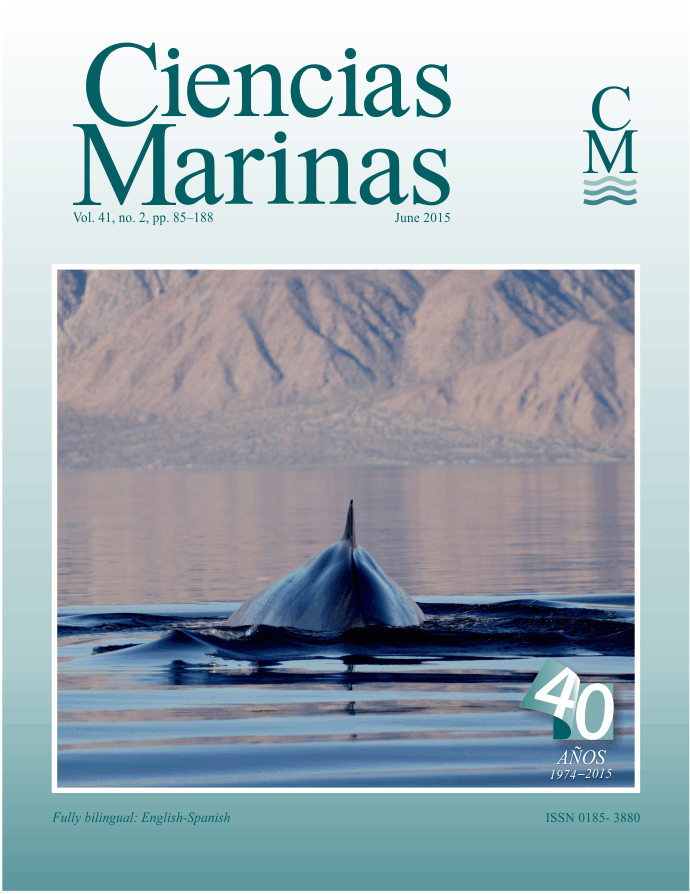Nutrient input from the Colorado River to the northern Gulf of California is not required to maintain a productive pelagic ecosystem
Main Article Content
Abstract
The high phytoplankton production (PP) of the northern Gulf of California (NGC) supports a rich biodiversity and fisheries with high yields. The NGC is the habitat of the vaquita (Phocoena sinus), the cetacean most at risk of extinction in the world. The objective of this study is to demonstrate that the NGC is a healthy system at the level of primary producers despite the lack of nutrient input from the Colorado River, and that the small size of the vaquita population is not attributable the collapse of its pelagic ecosystem. Information derived from satellite sensors (CZCS, SeaWiFS, and Aqua-MODIS) was used to explore the possibility of a negative tendency in phytoplankton biomass and PP in the NGC during the last ~35 years. Temporal and spatial variations in sea surface temperature (SSTsat), chlorophyll concentration (Chlsat), and PP were analyzed. Times series were generated for four coastal quadrants, two in the western part and two in the eastern part of the NGC. The NW quadrant covers the vaquita habitat, and it had higher Chlsat and PP values than the others. This may be due to advection of turbid Upper Gulf waters into the NW quadrant. Semiannual and interannual changes in Chlsat and PP occurred, but the seasonal signal was dominant in the whole region. SSTsat maxima occurred in August and September (30–31 ºC) and minima in January and February (16–17 ºC). Chlsat and PP maxima were recorded in March and April (2–3 mg m–3, 2–3 g C m–2 day–1, respectively) and minima in August and September (0.2–0.9 mg m–3, 0.5–1.1 g C m–2 day–1, respectively). These values indicate that the pelagic ecosystem of the NGC is very productive (mesotrophic in summer-autumn and eutrophic in winter-spring).
Downloads
Article Details
This is an open access article distributed under a Creative Commons Attribution 4.0 License, which allows you to share and adapt the work, as long as you give appropriate credit to the original author(s) and the source, provide a link to the Creative Commons license, and indicate if changes were made. Figures, tables and other elements in the article are included in the article’s CC BY 4.0 license, unless otherwise indicated. The journal title is protected by copyrights and not subject to this license. Full license deed can be viewed here.

